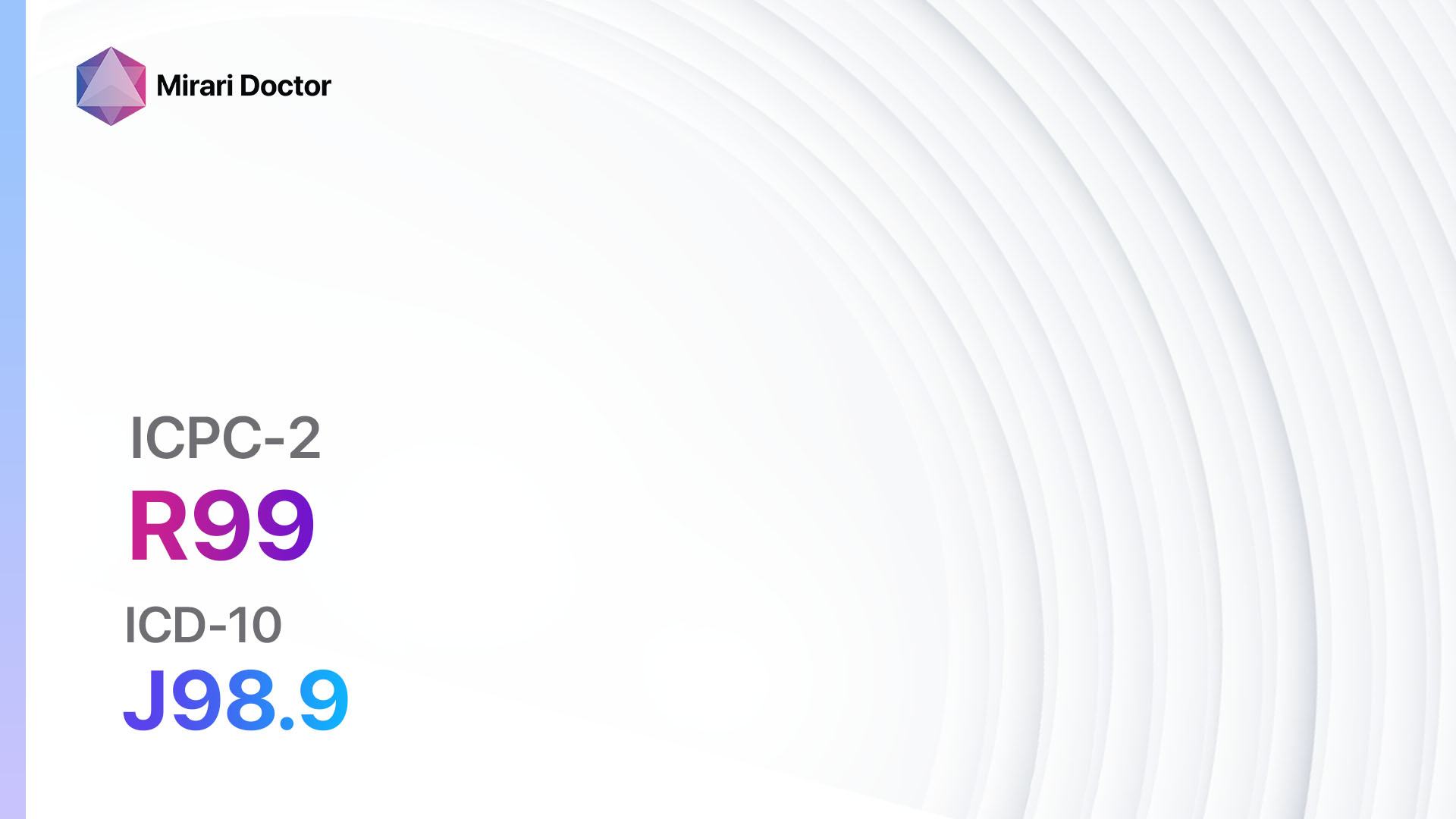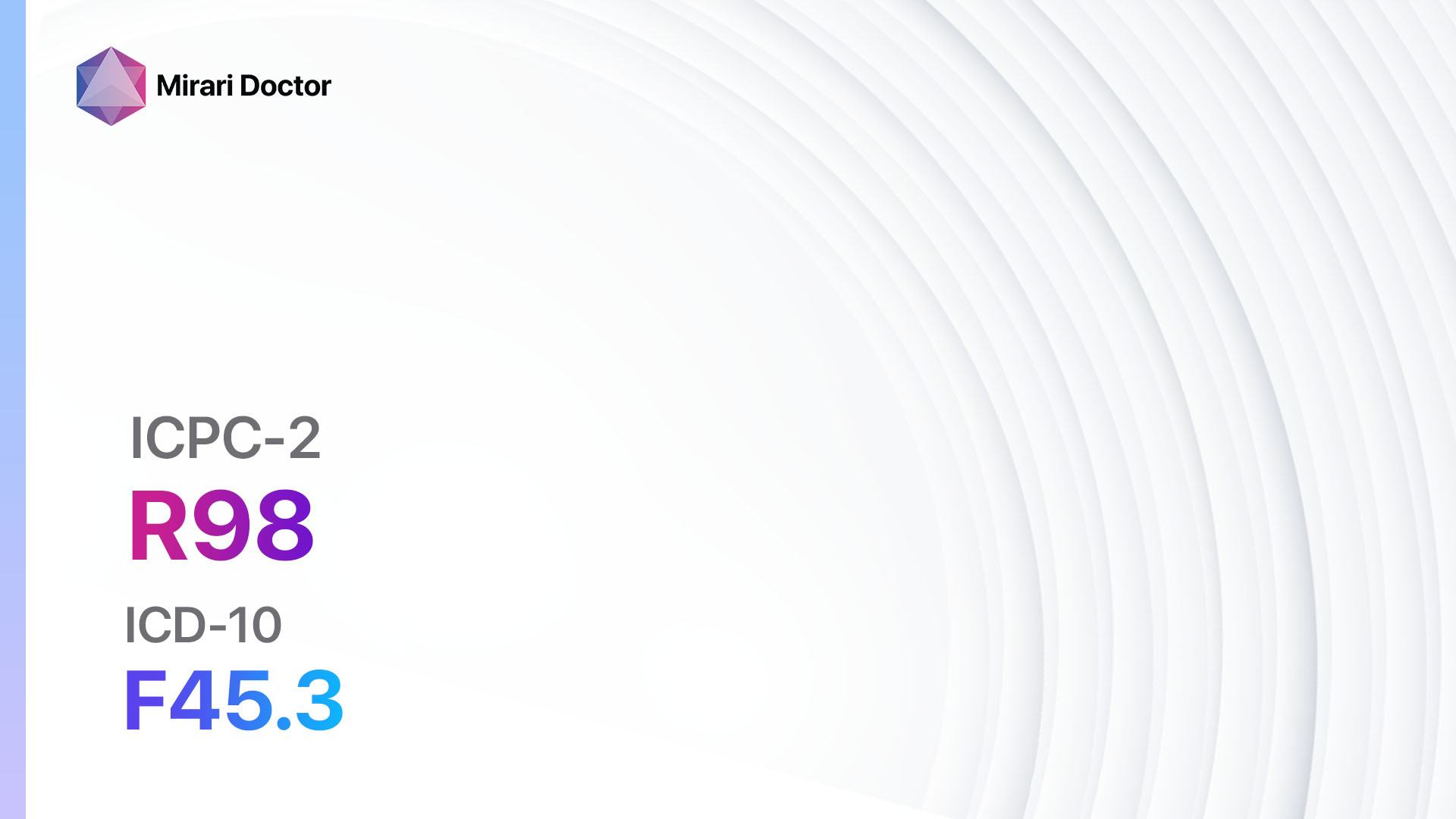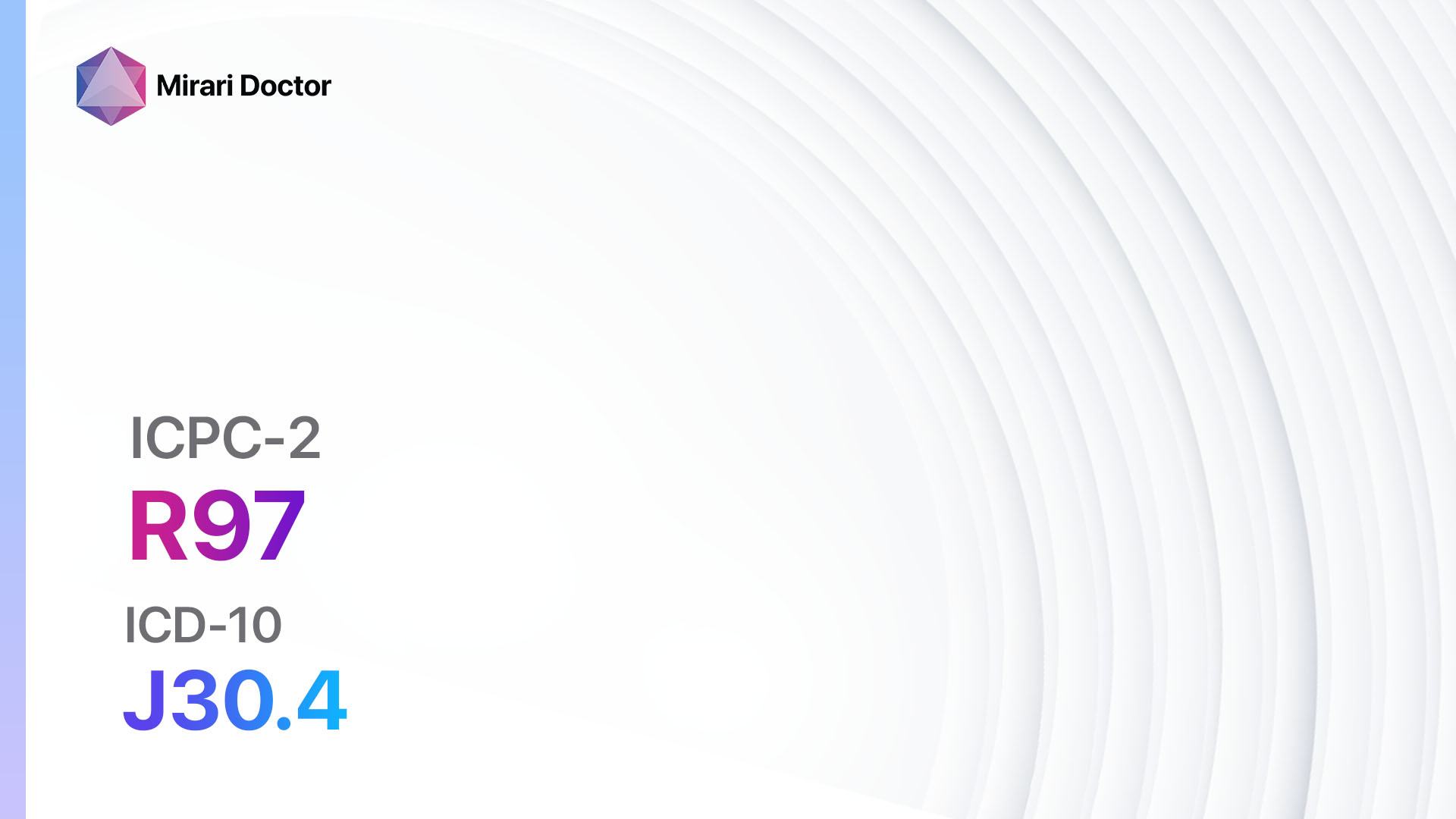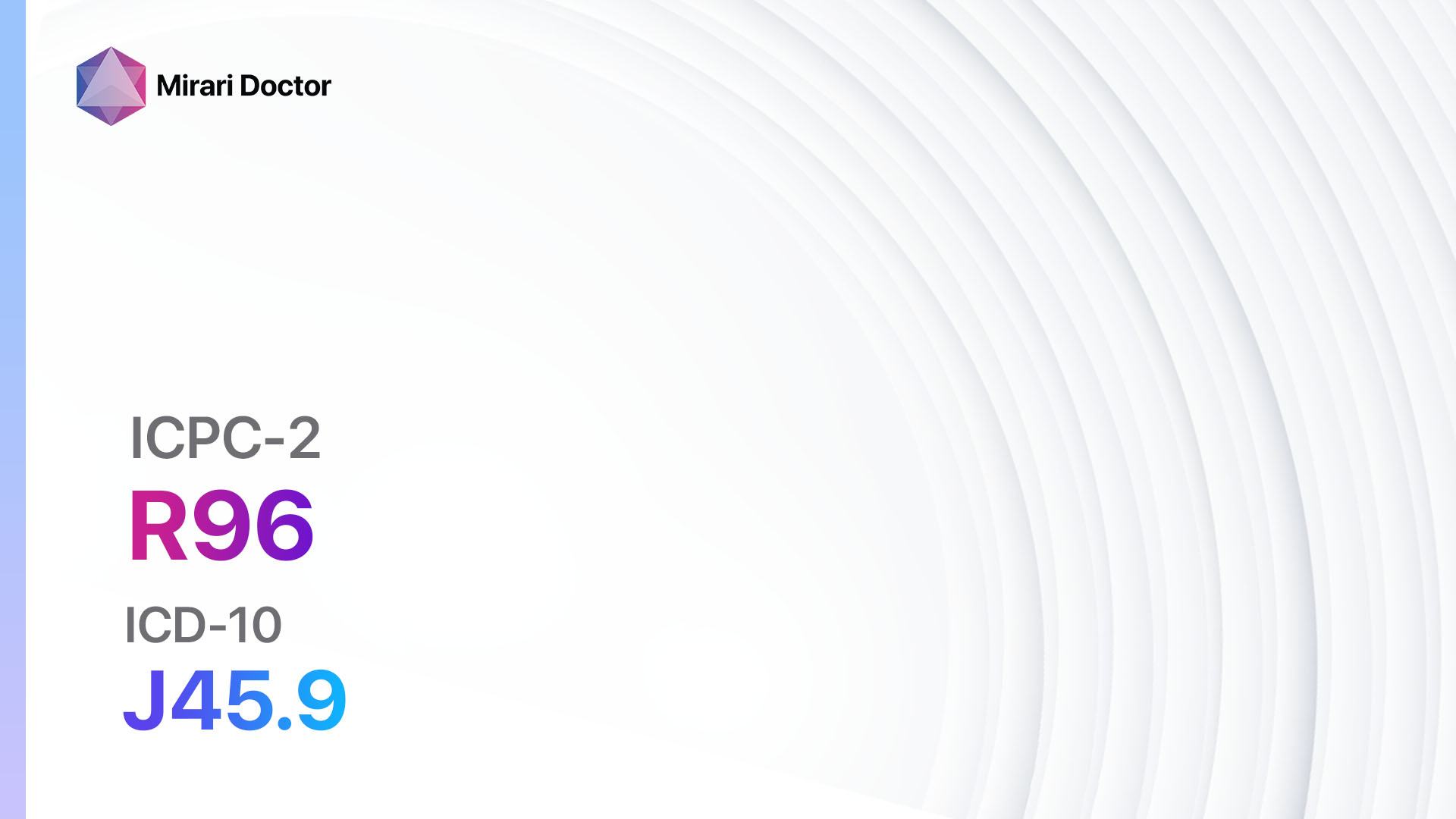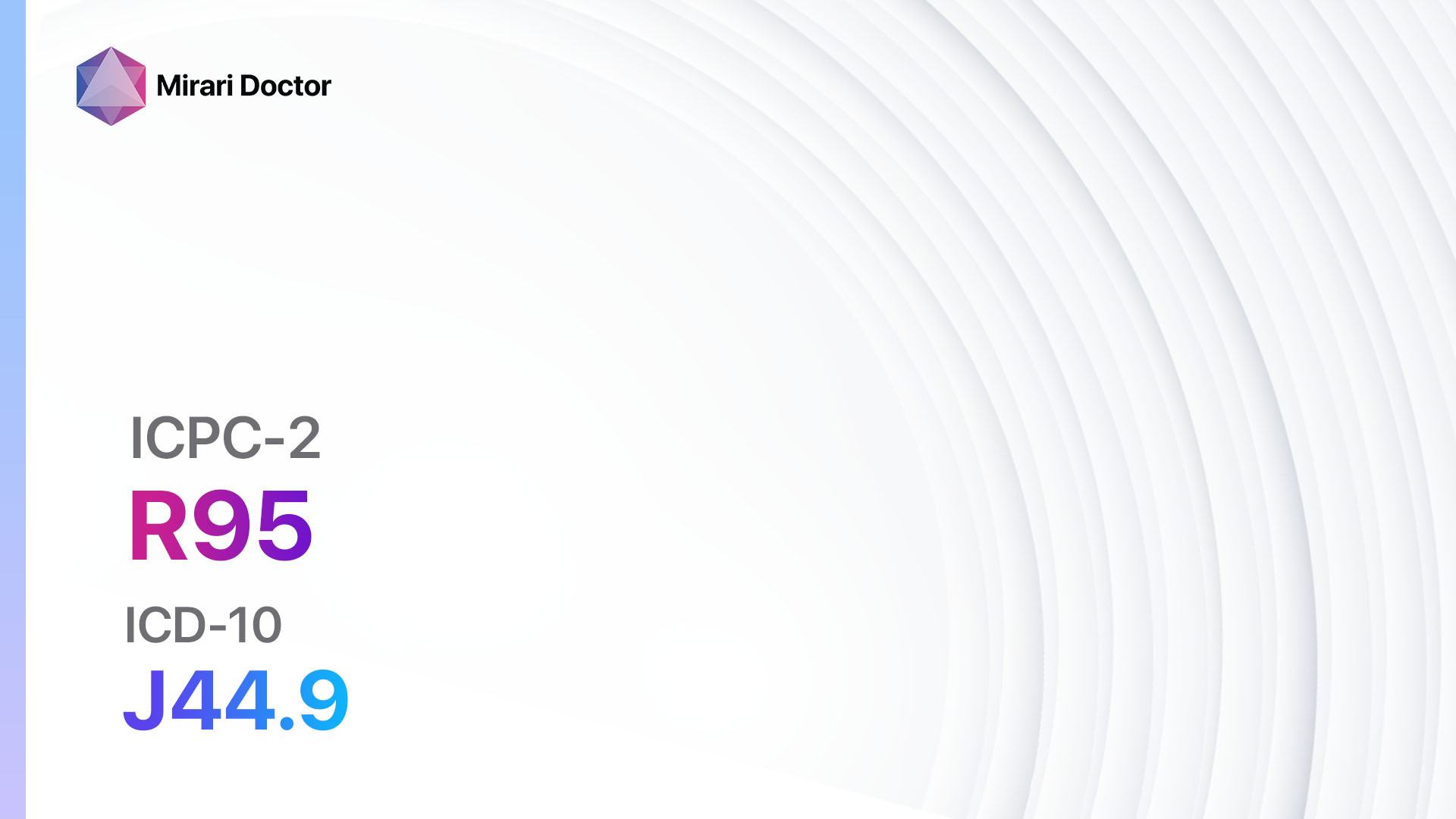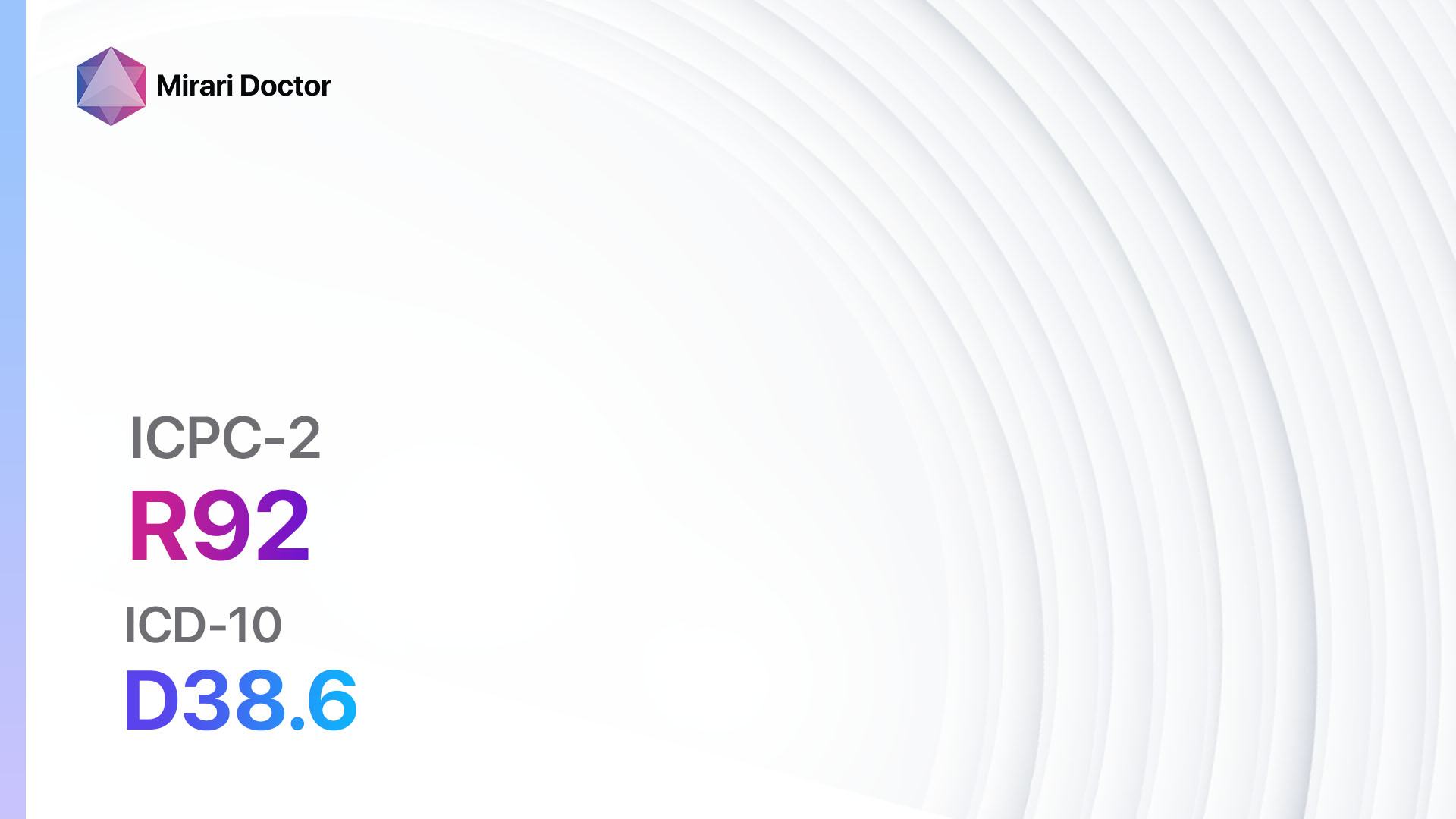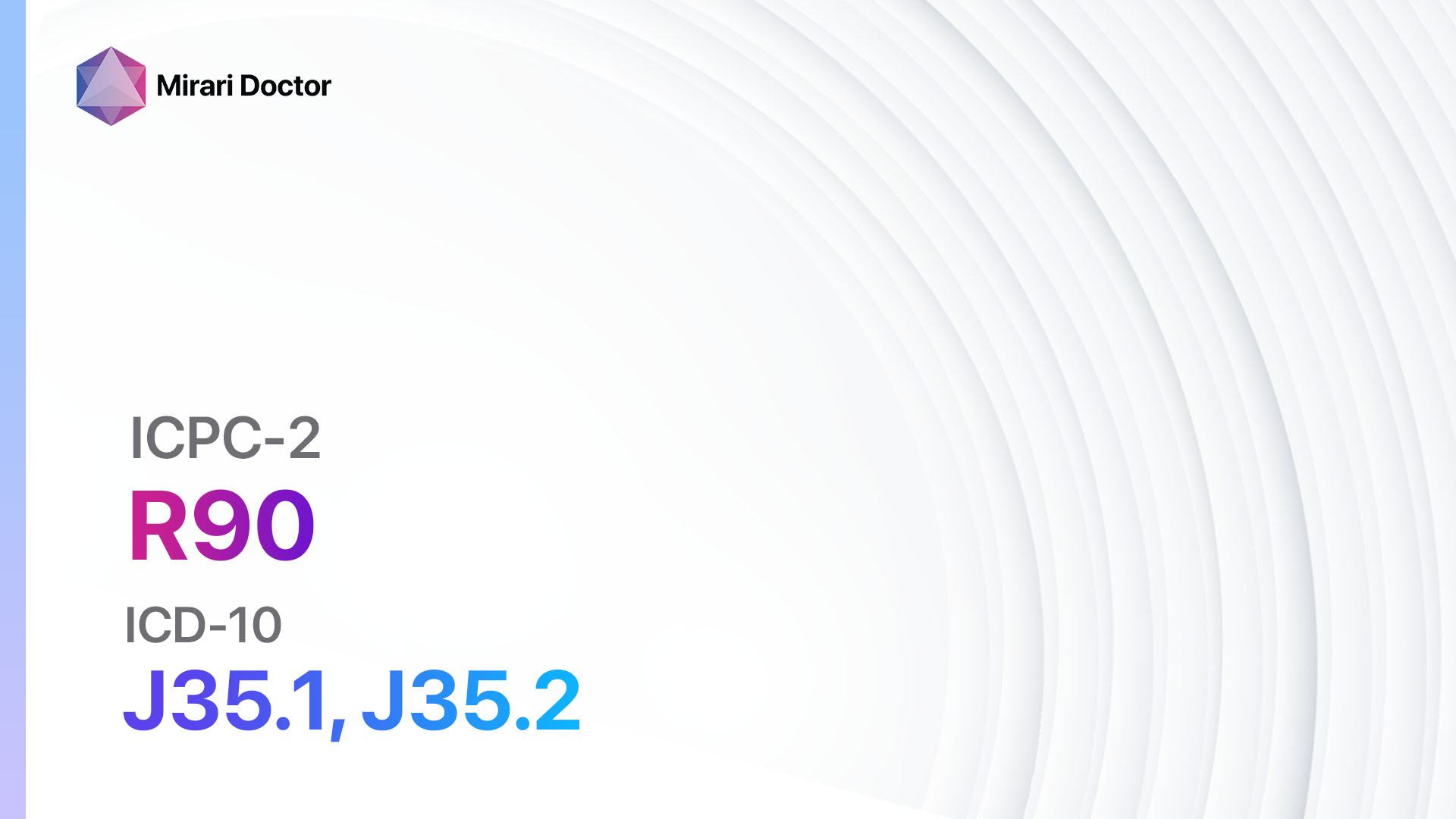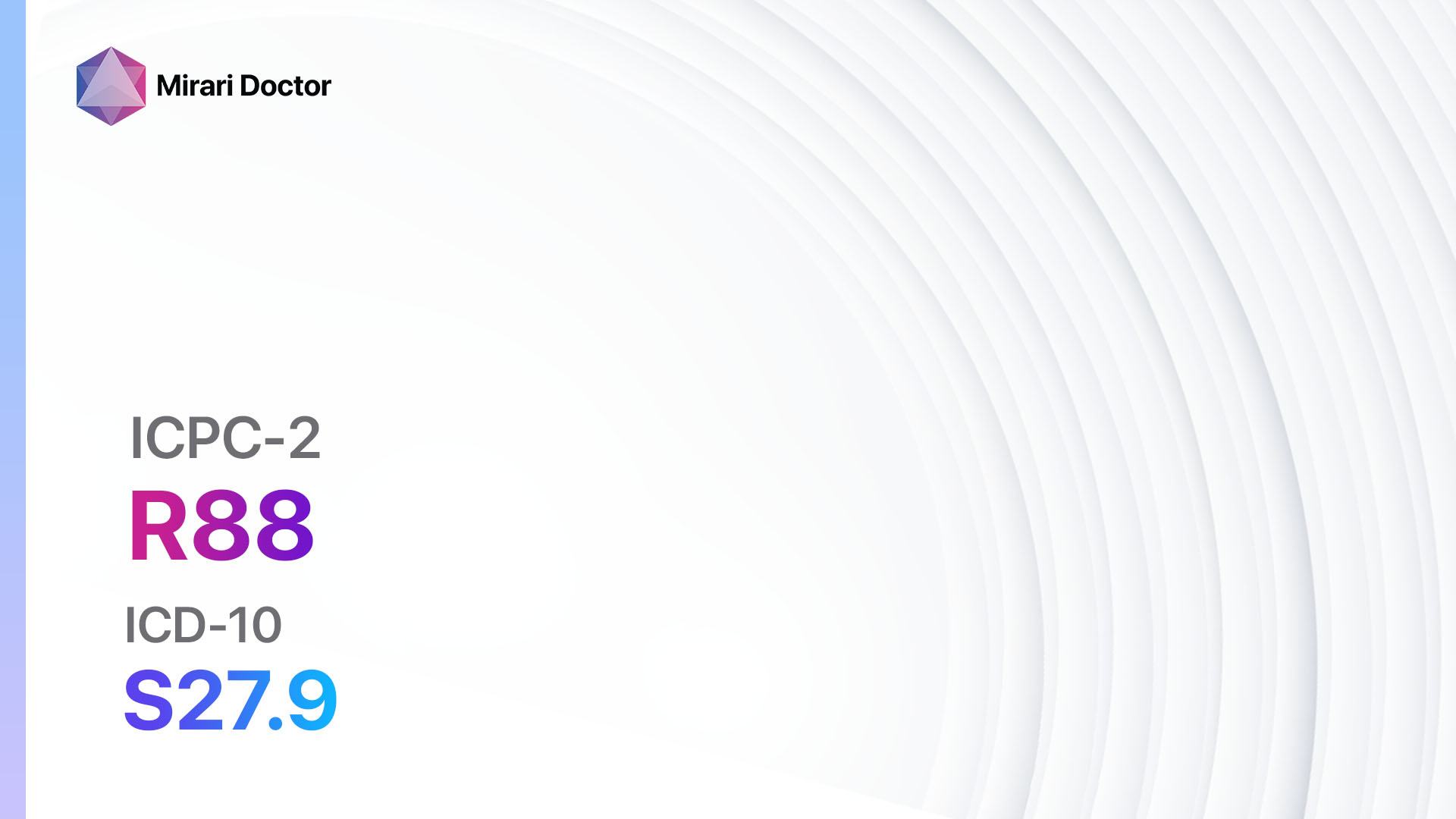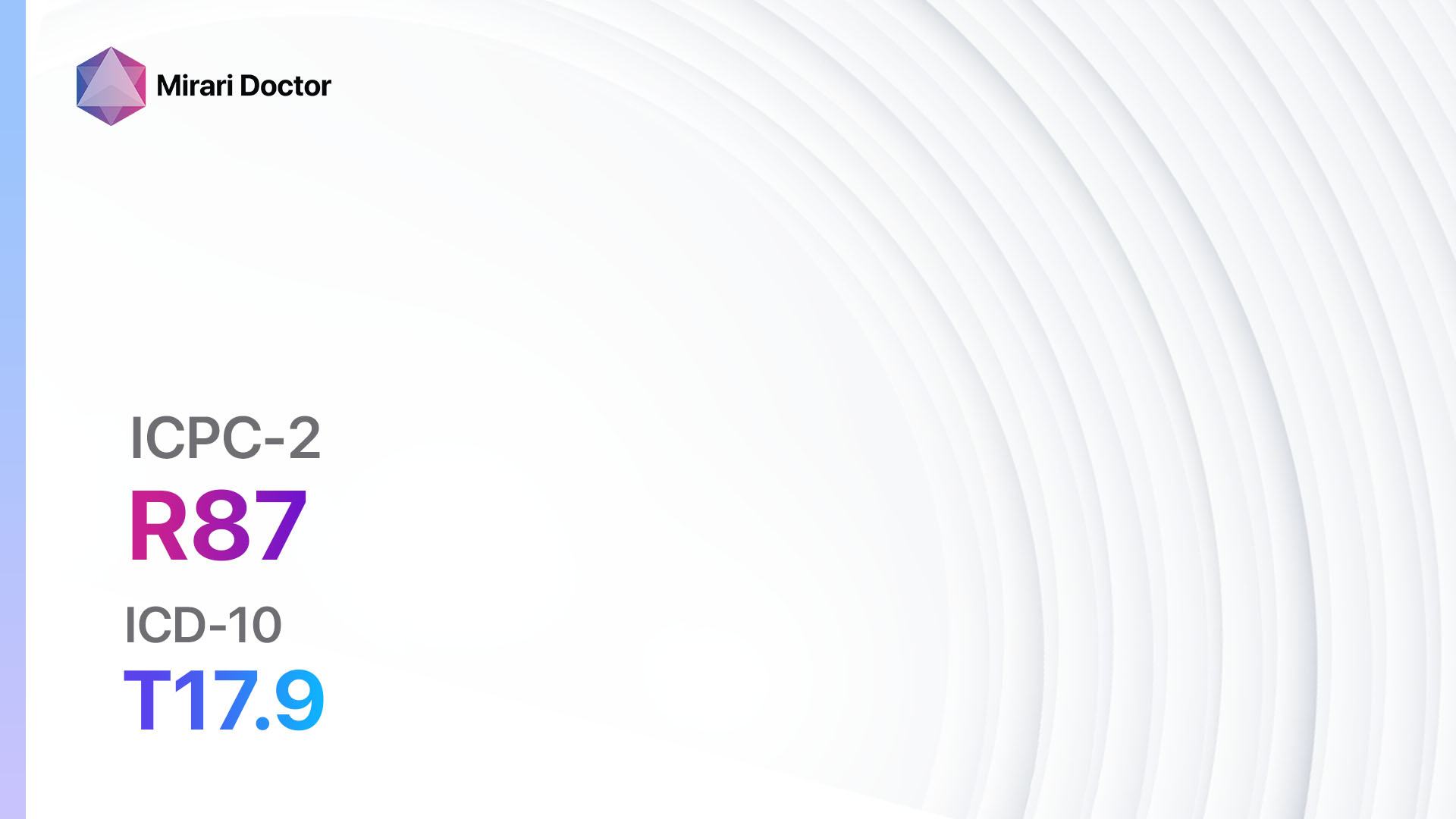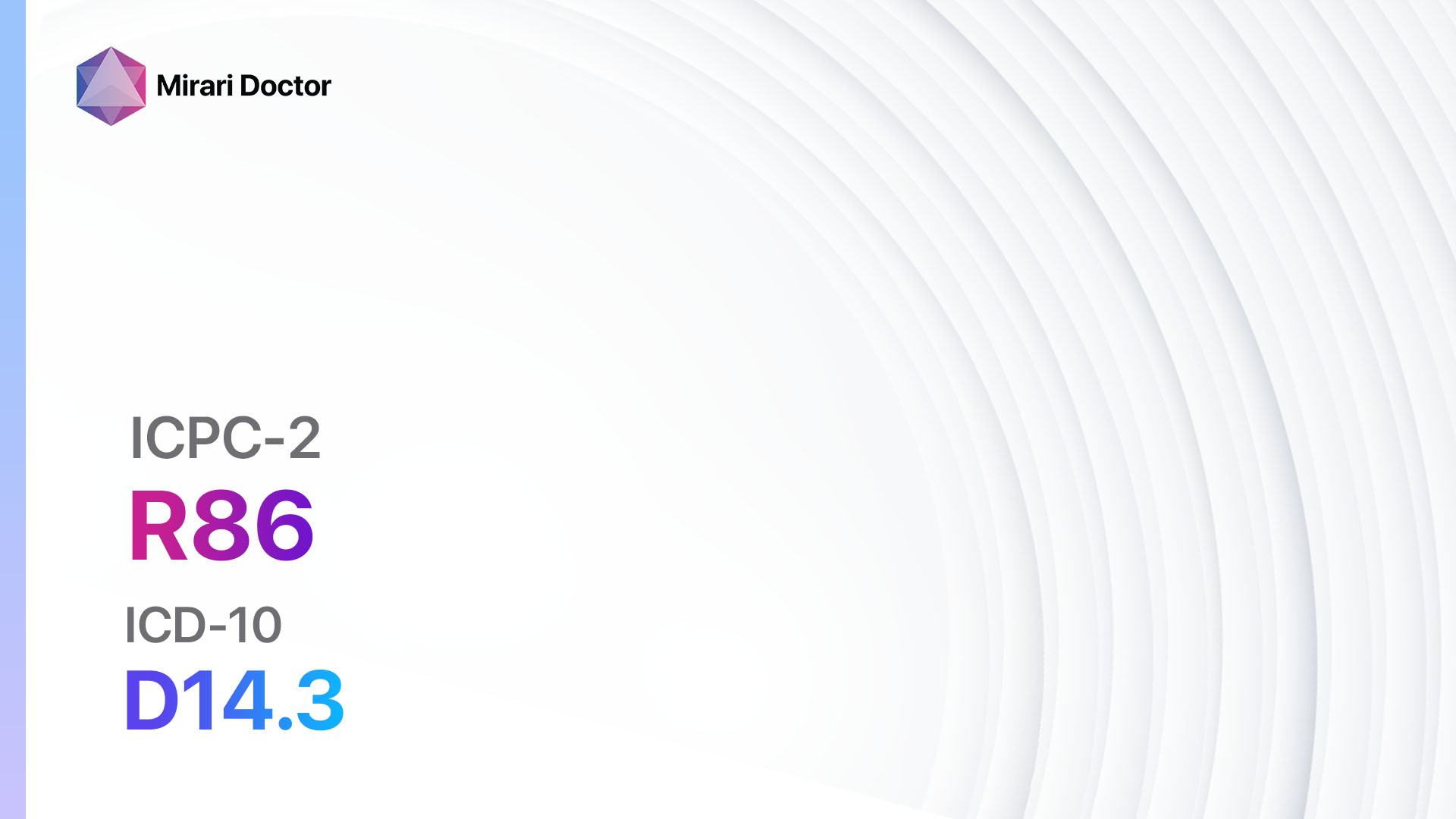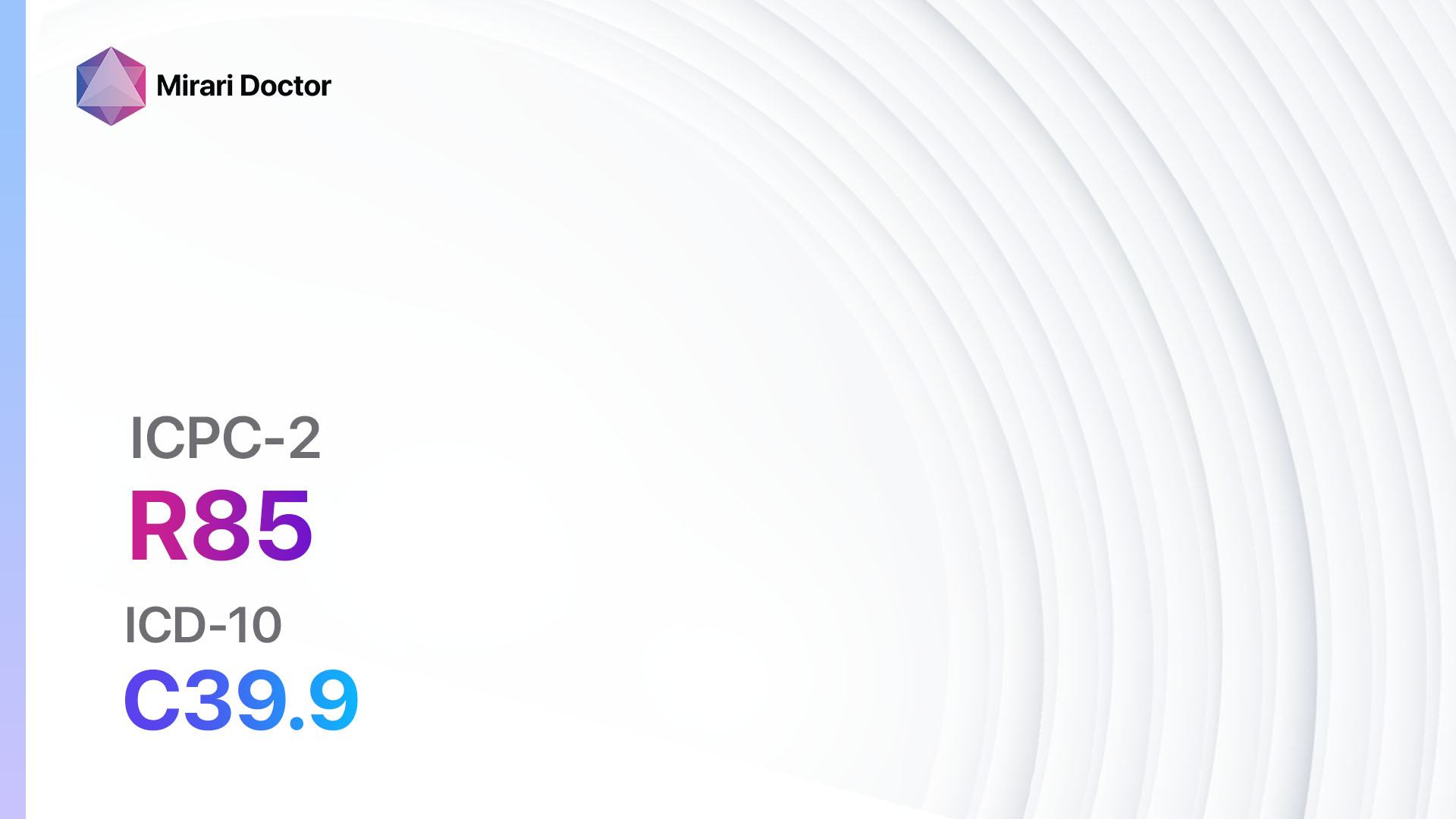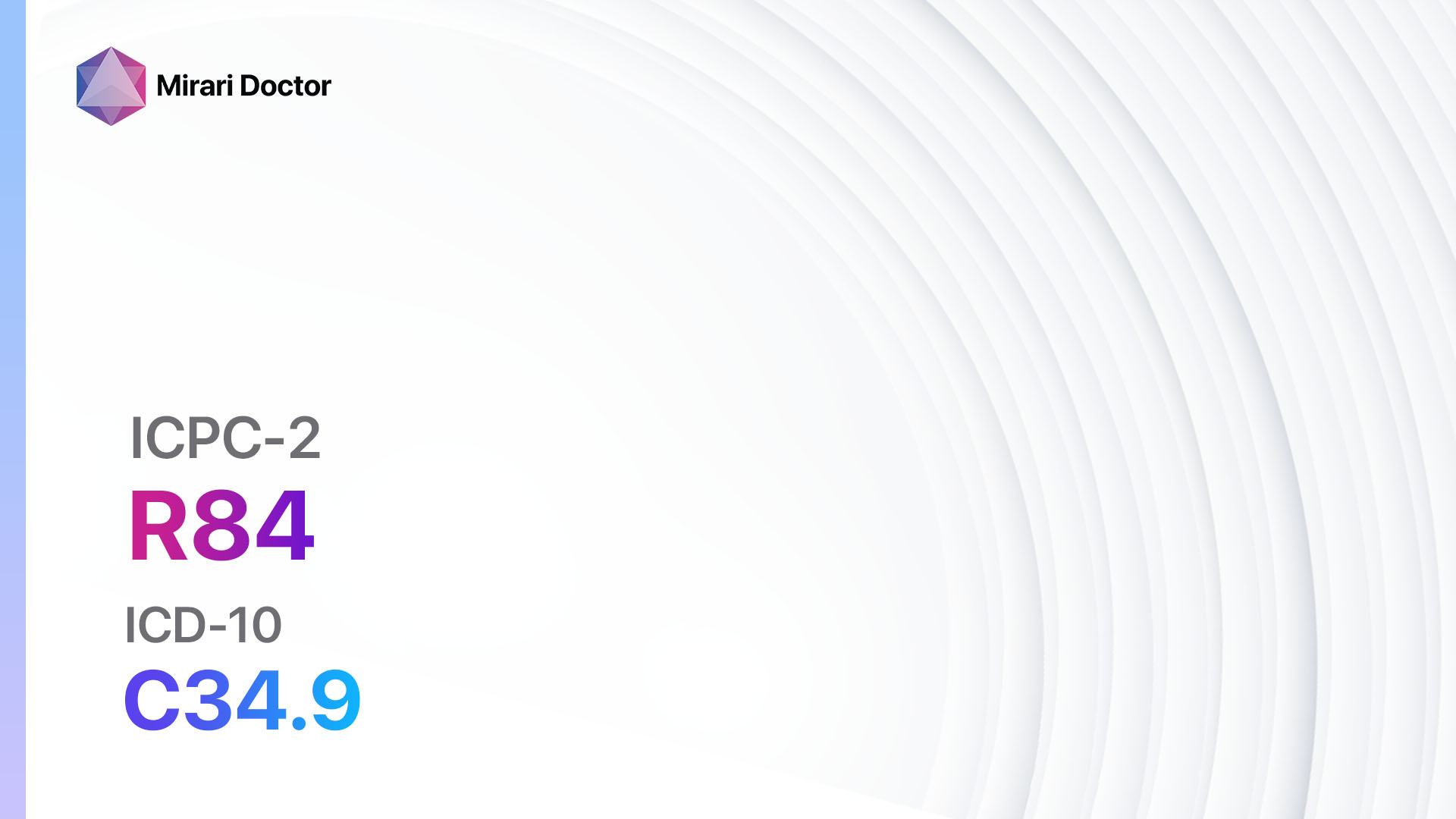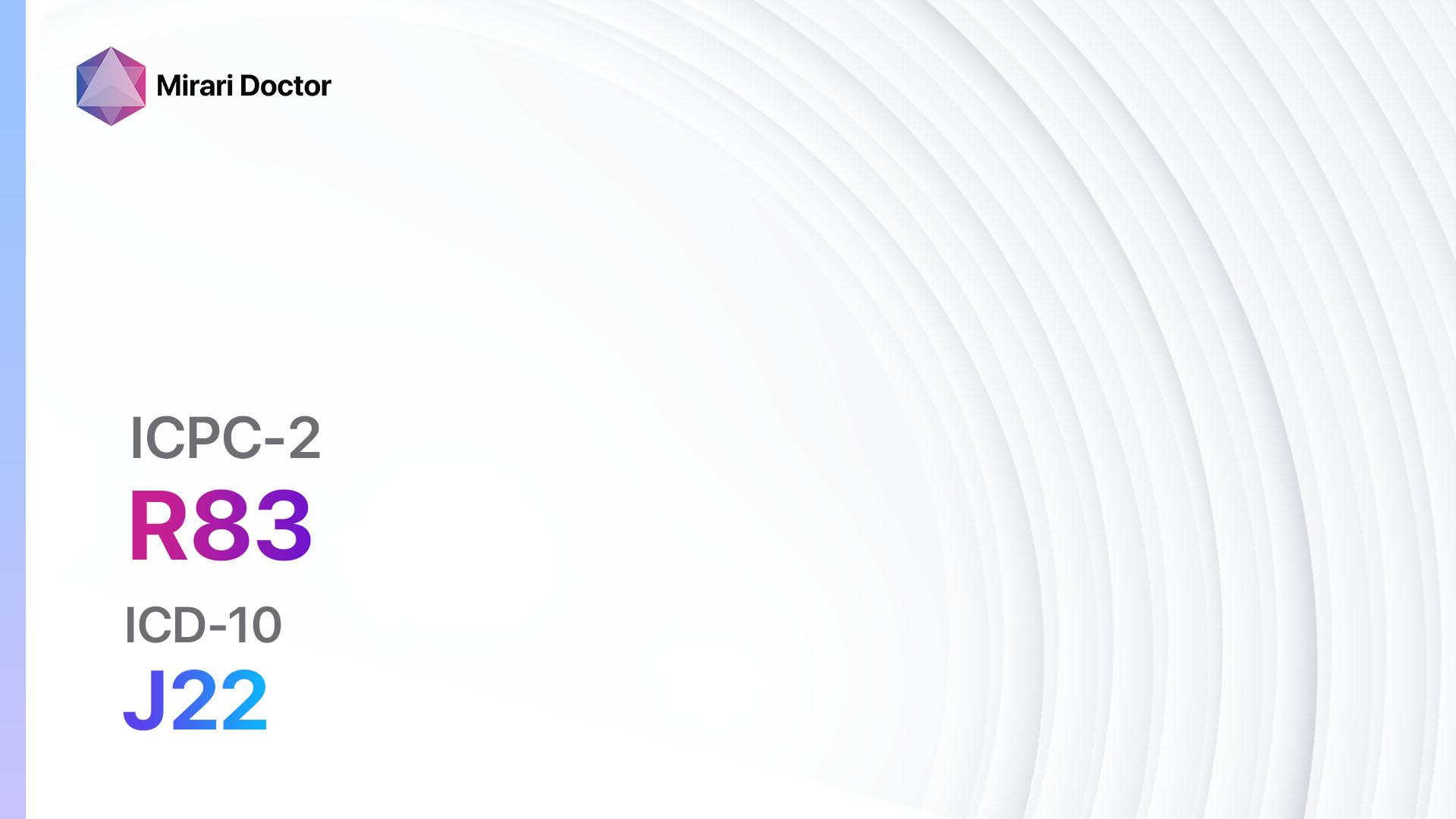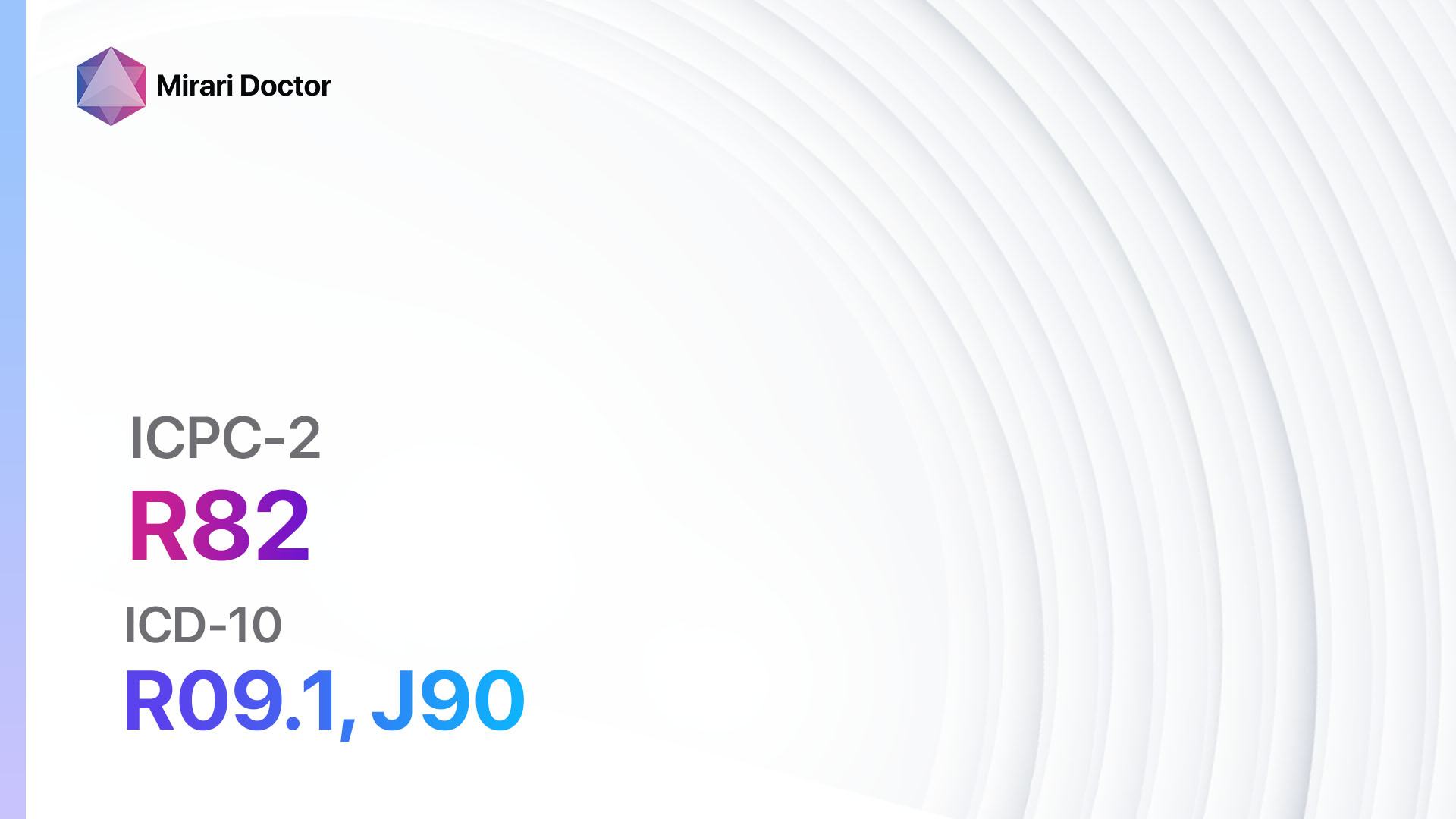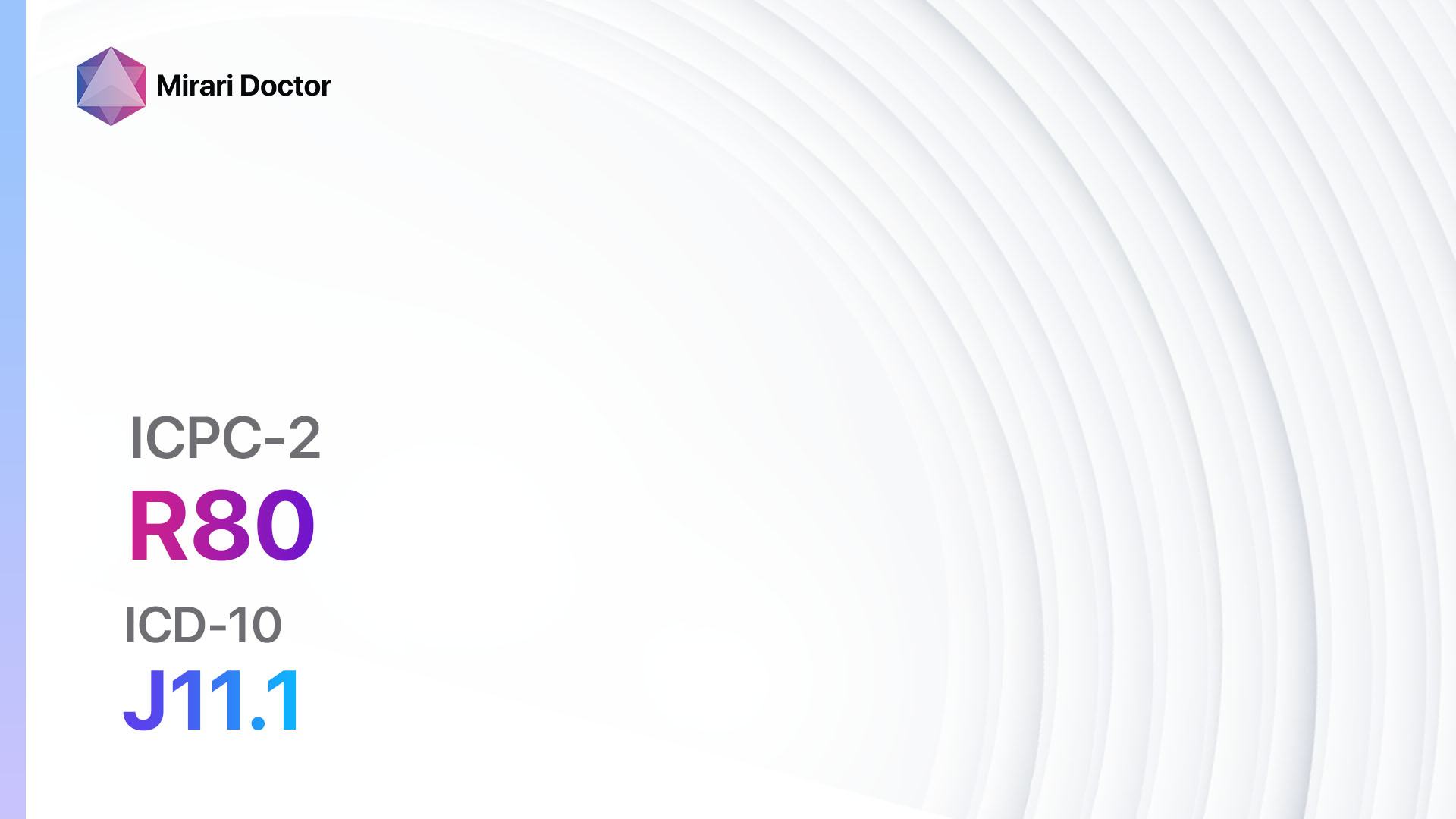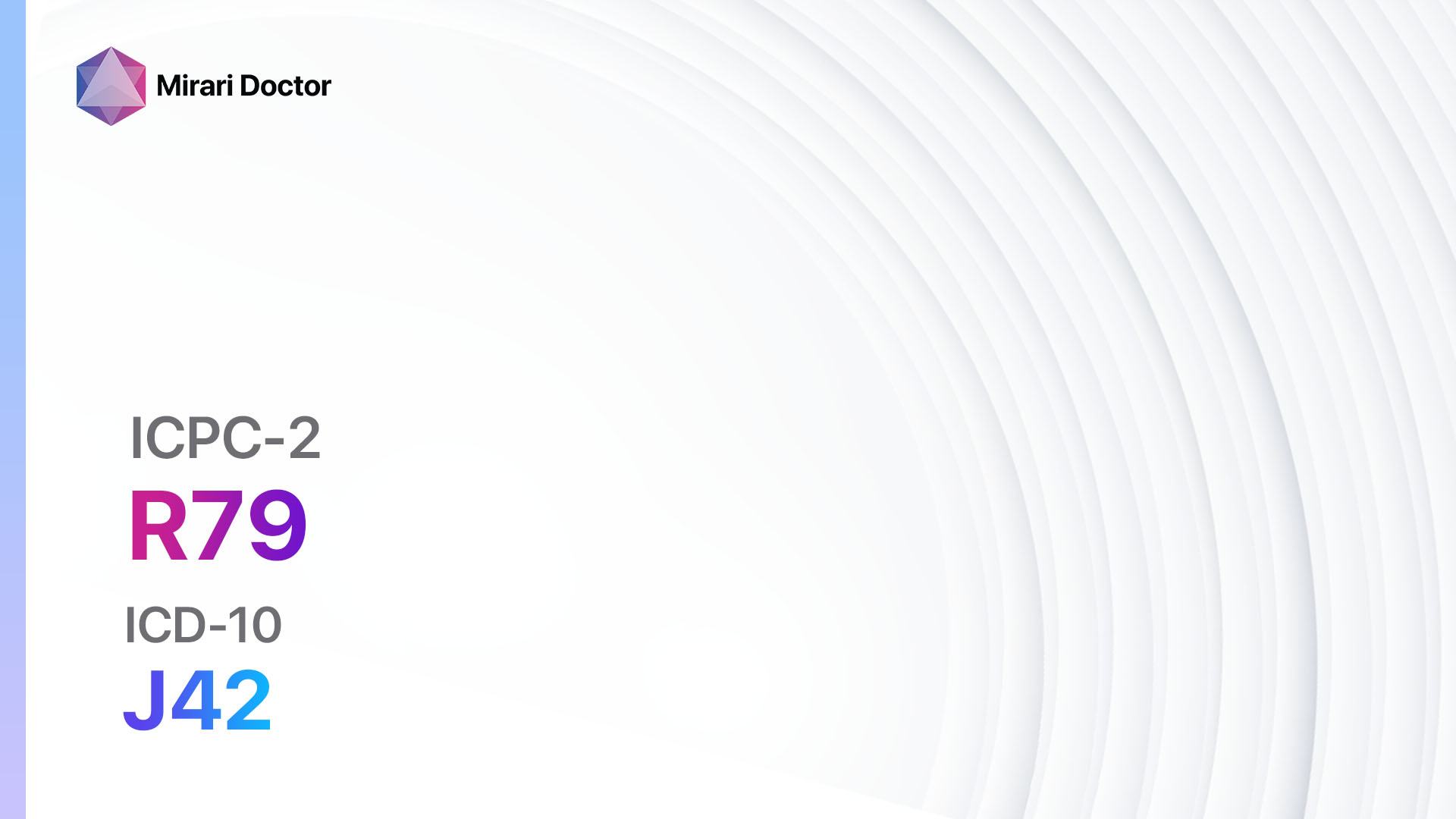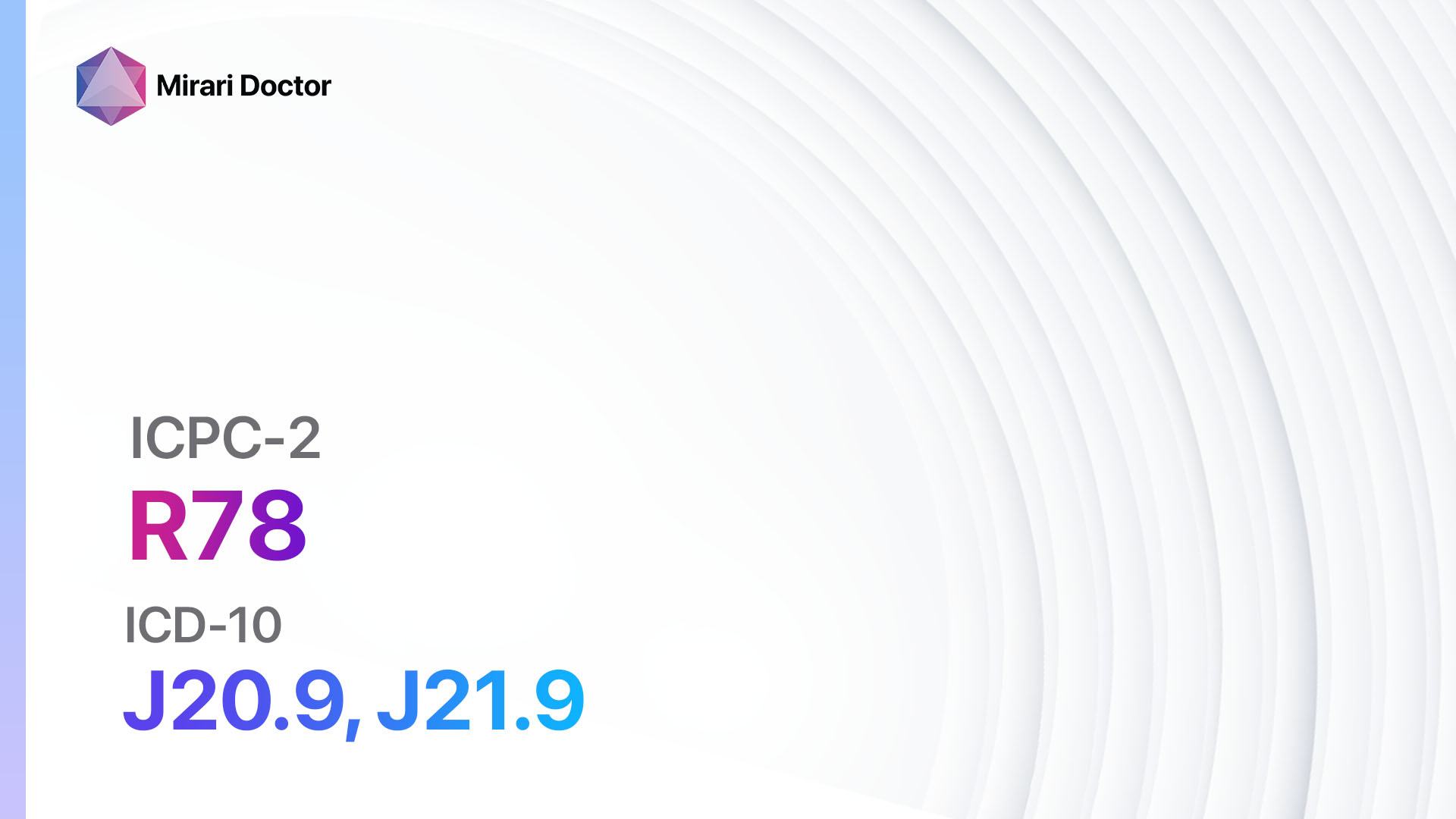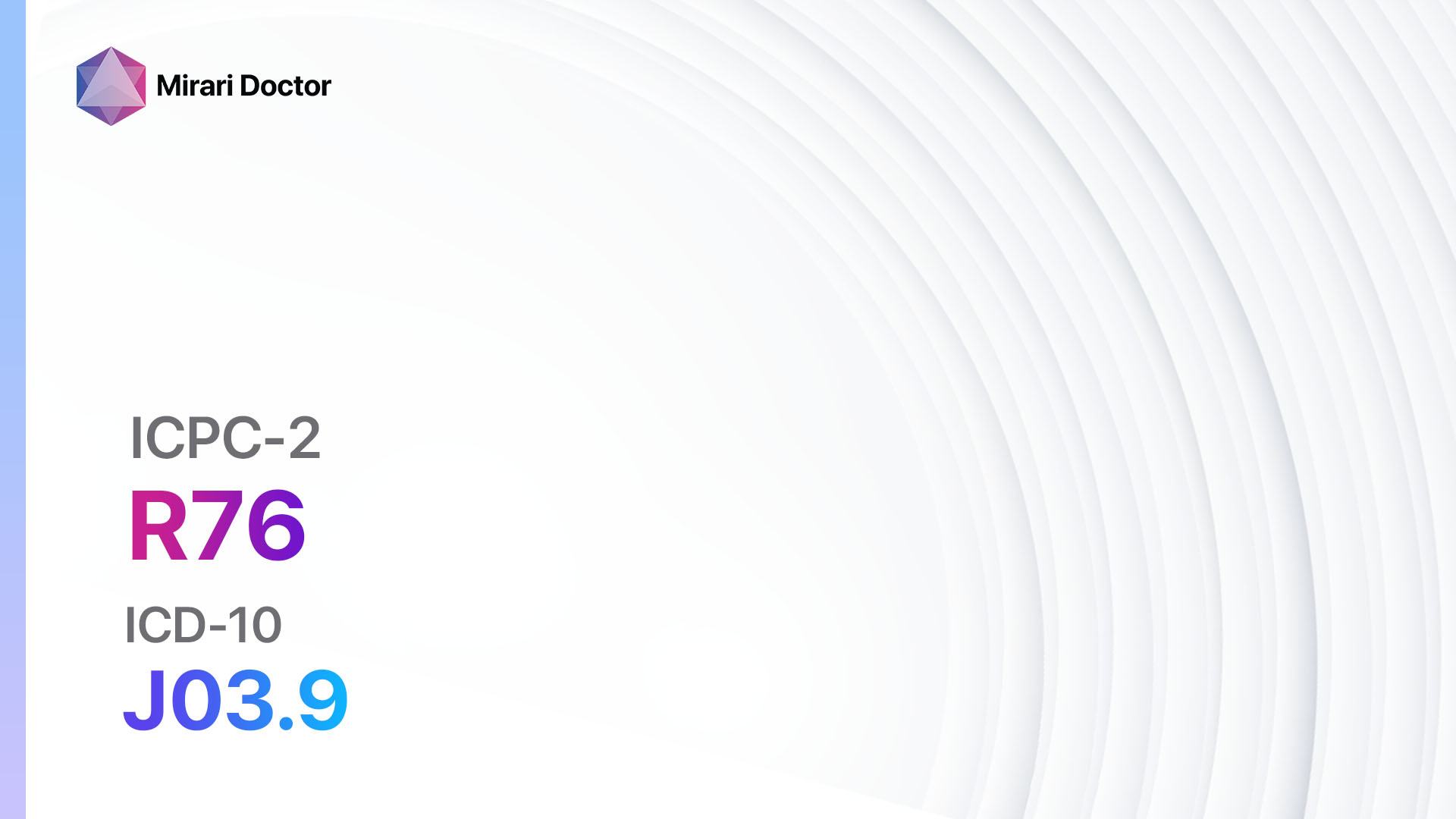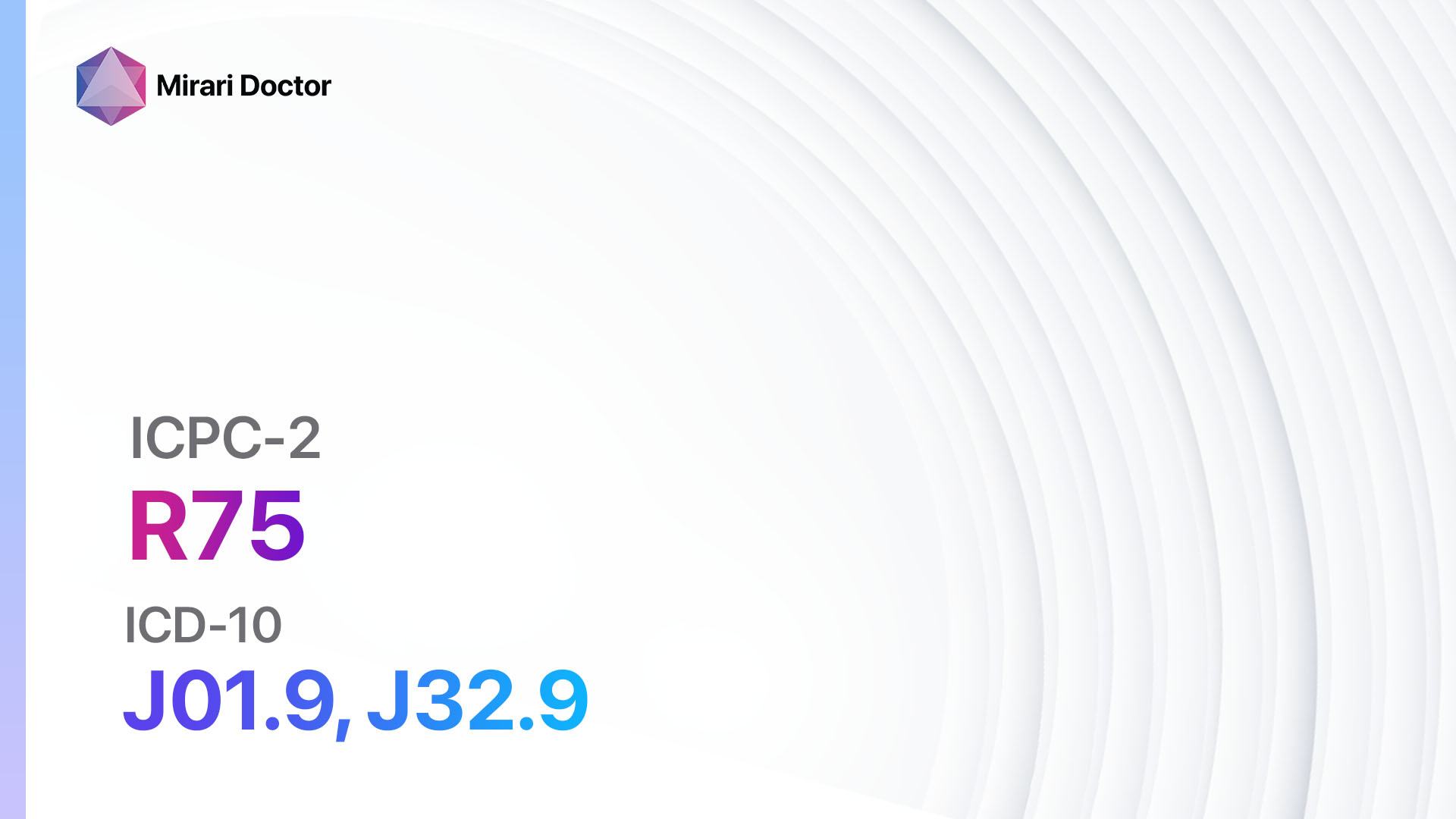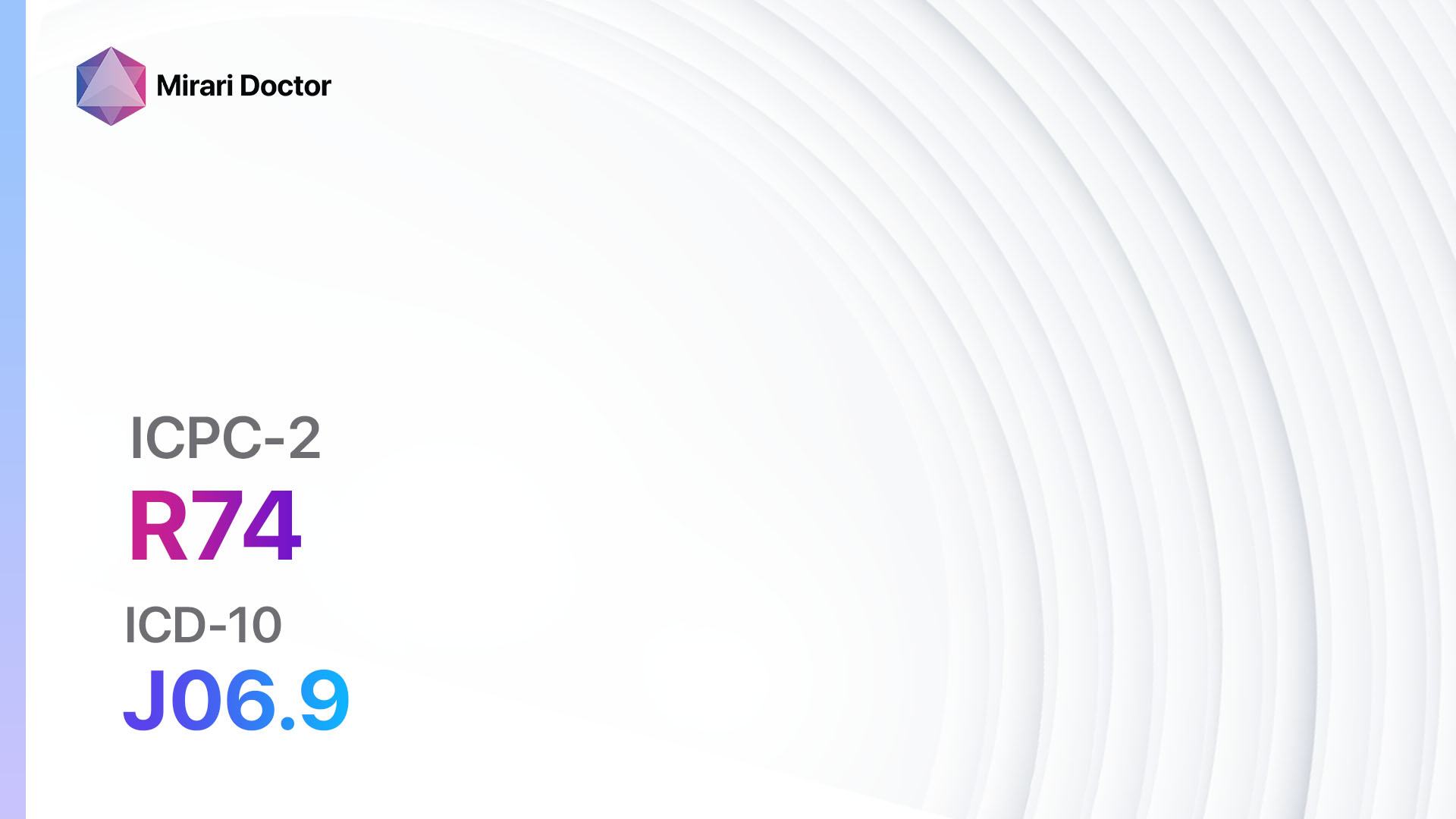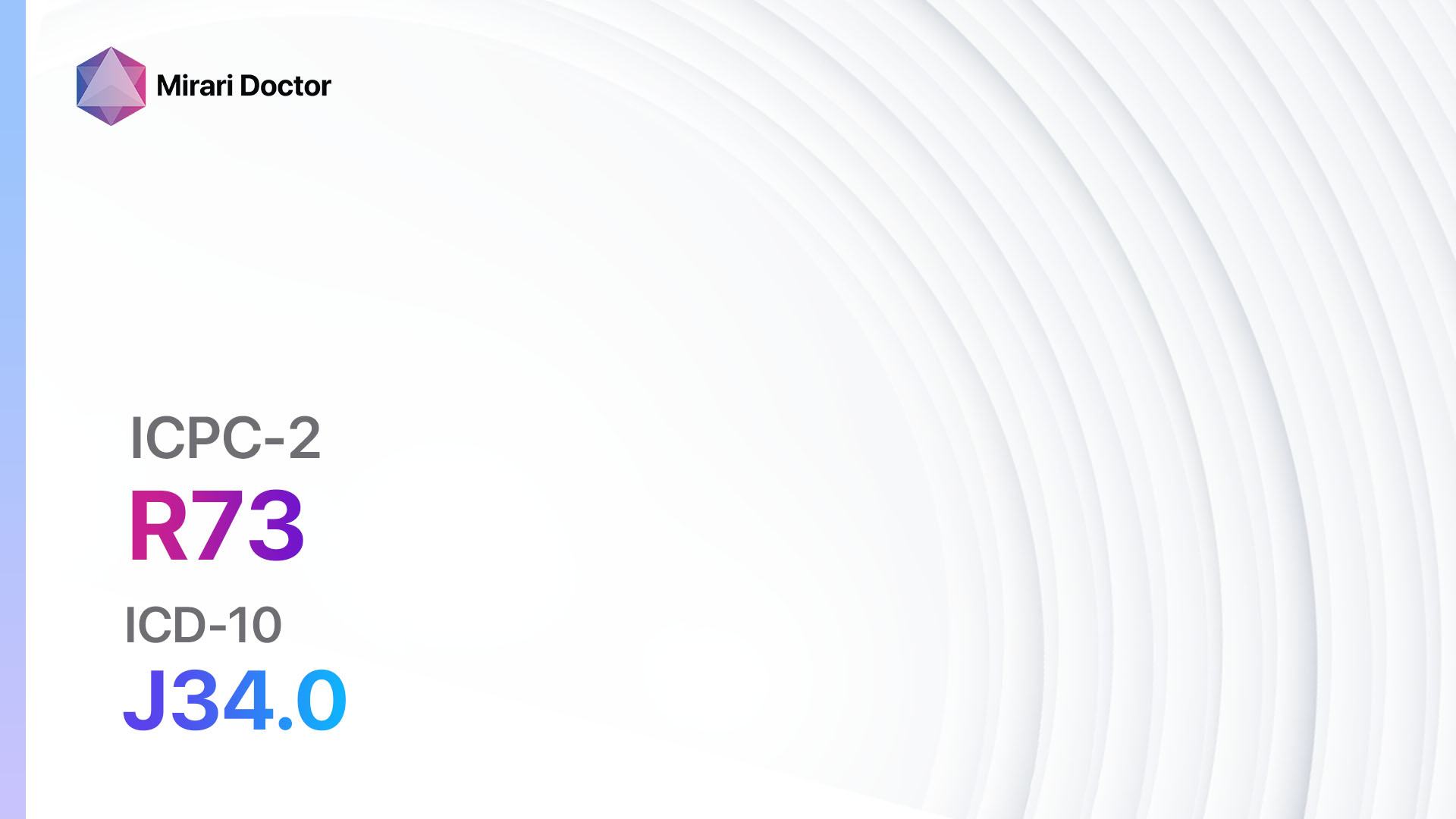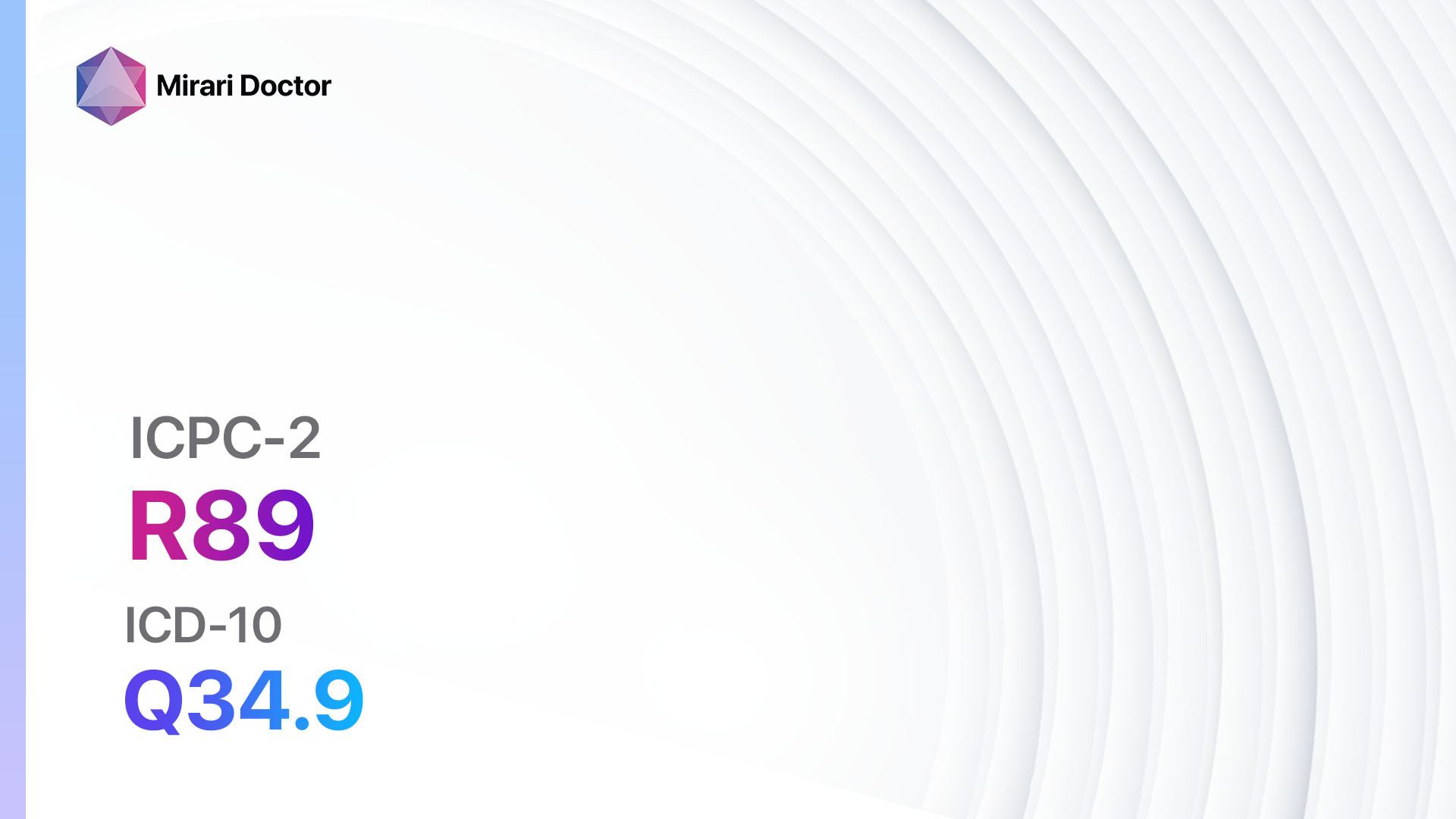
Introduction
Congenital anomaly respiratory refers to a group of respiratory conditions that are present at birth. These anomalies can affect various parts of the respiratory system, including the lungs, airways, and diaphragm.[1]The aim of this guide is to provide an overview of the symptoms, causes, diagnostic steps, possible interventions, and lifestyle interventions for congenital anomaly respiratory.
Codes
- ICPC-2 Code: R89 Congenital anomaly respiratory
- ICD-10 Code: Q34.9 Congenital malformation of respiratory system, unspecified[2]
Symptoms
- Difficulty breathing: Newborns may exhibit rapid or labored breathing, grunting, or flaring of the nostrils.
- Cyanosis: Bluish discoloration of the skin, lips, or nails due to inadequate oxygenation.
- Respiratory distress: Increased work of breathing, retractions (visible pulling in of the chest wall), or nasal flaring.
- Abnormal lung sounds: Wheezing, crackles, or decreased breath sounds.
- Recurrent respiratory infections: Frequent bouts of pneumonia, bronchitis, or other respiratory infections.[3]
Causes
- Genetic factors: Mutations or abnormalities in the genes responsible for the development of the respiratory system.
- Environmental factors: Exposure to certain substances or toxins during pregnancy, such as tobacco smoke or certain medications.
- Maternal health conditions: Maternal conditions like diabetes or high blood pressure can increase the risk of respiratory anomalies in the fetus.[4]
Diagnostic Steps
Medical History
- Gather information about the patient’s prenatal history, including any maternal health conditions or exposures.
- Ask about the presence of symptoms, such as difficulty breathing or recurrent respiratory infections.
- Inquire about any family history of respiratory anomalies or other genetic conditions.[5]
Physical Examination
- Perform a thorough physical examination, including inspection, palpation, percussion, and auscultation of the chest.
- Look for signs of respiratory distress, such as increased work of breathing, retractions, or cyanosis.
- Listen for abnormal lung sounds, such as wheezing, crackles, or decreased breath sounds.[6]
Laboratory Tests
- Blood tests: Complete blood count (CBC) to assess for infection or anemia, arterial blood gas (ABG) analysis to evaluate oxygen and carbon dioxide levels.
- Genetic testing: Chromosomal analysis or specific gene mutation testing to identify any genetic abnormalities.
- Pulmonary function tests: Assess lung function and capacity.[7]
Diagnostic Imaging
- Chest X-ray: Evaluate the structure and position of the lungs, airways, and diaphragm.
- CT scan: Provide detailed images of the respiratory system, useful for identifying specific anomalies.
- MRI: Assess soft tissues and blood vessels in the respiratory system.[8]
Other Tests
- Echocardiogram: Evaluate the structure and function of the heart, as some respiratory anomalies may be associated with cardiac defects.
- Bronchoscopy: Insertion of a thin, flexible tube with a camera into the airways to visualize any abnormalities.
- Sleep study: Assess breathing patterns during sleep, useful for diagnosing conditions like sleep apnea.[9]
Follow-up and Patient Education
- Schedule regular follow-up appointments to monitor the patient’s respiratory health and address any concerns.
- Provide education on managing symptoms, recognizing signs of respiratory distress, and seeking medical attention when necessary.
- Offer support and resources for families, including genetic counseling and support groups.[10]
Possible Interventions
Traditional Interventions
Medications:
Top 5 drugs for Congenital anomaly respiratory:
- Bronchodilators (e.g., Albuterol, Salbutamol):
- Cost: Generic versions can be $10-$50/month.
- Contraindications: Hypersensitivity to the medication.
- Side effects: Increased heart rate, tremors, headache.
- Severe side effects: Chest pain, irregular heartbeat.
- Drug interactions: Beta-blockers, diuretics.
- Warning: Use with caution in patients with underlying heart conditions.
- Corticosteroids (e.g., Prednisone, Dexamethasone):
- Cost: Generic versions can be $10-$50/month.
- Contraindications: Active infections, systemic fungal infections.
- Side effects: Increased appetite, weight gain, mood changes.
- Severe side effects: Adrenal suppression, osteoporosis.
- Drug interactions: Nonsteroidal anti-inflammatory drugs (NSAIDs), anticoagulants.
- Warning: Long-term use may require gradual tapering to avoid adrenal insufficiency.
- Antibiotics (e.g., Amoxicillin, Azithromycin):
- Cost: Generic versions can be $10-$50/month.
- Contraindications: Allergy to the specific antibiotic.
- Side effects: Upset stomach, diarrhea.
- Severe side effects: Severe allergic reactions, Clostridium difficile infection.
- Drug interactions: Warfarin, oral contraceptives.
- Warning: Use only when necessary to avoid antibiotic resistance.
- Diuretics (e.g., Furosemide, Spironolactone):
- Cost: Generic versions can be $10-$50/month.
- Contraindications: Anuria (absence of urine production), hypersensitivity.
- Side effects: Increased urination, electrolyte imbalances.
- Severe side effects: Dehydration, kidney damage.
- Drug interactions: Nonsteroidal anti-inflammatory drugs (NSAIDs), lithium.
- Warning: Monitor electrolyte levels regularly.
- Mucolytics (e.g., Acetylcysteine, Carbocisteine):
- Cost: Generic versions can be $10-$50/month.
- Contraindications: Hypersensitivity to the medication.
- Side effects: Nausea, vomiting, runny nose.
- Severe side effects: Severe allergic reactions, bronchospasm.
- Drug interactions: Nitroglycerin, antitussive medications.
- Warning: Use with caution in patients with a history of gastrointestinal bleeding.
Alternative Drugs:
- Leukotriene modifiers (e.g., Montelukast): Useful for managing asthma symptoms in patients with respiratory anomalies.
- Immunoglobulin therapy: May be considered for patients with immune deficiencies associated with recurrent respiratory infections.
- Prostaglandin analogs (e.g., Misoprostol): Used in specific cases of congenital diaphragmatic hernia to maintain ductal patency.
- Oxygen therapy: Supplemental oxygen may be necessary for patients with severe respiratory distress.
Surgical Procedures:
- Repair of diaphragmatic hernia: Surgical correction of a diaphragmatic defect to restore normal respiratory function. Cost: $20,000 to $100,000.
- Tracheostomy: Creation of an opening in the neck to bypass upper airway obstruction. Cost: $10,000 to $50,000.
- Lung transplantation: Considered in severe cases of respiratory anomalies with irreversible lung damage. Cost: $100,000 to $1,000,000.
Alternative Interventions
- Acupuncture: May help improve respiratory function and reduce symptoms. Cost: $60-$120 per session.
- Chiropractic care: May help improve spinal alignment and respiratory function. Cost: $50-$100 per session.
- Breathing exercises: Techniques such as diaphragmatic breathing and pursed-lip breathing can improve lung function. Cost: Free.
- Herbal supplements: Some herbs, such as licorice root or mullein, may have potential benefits for respiratory health. Cost: Varies depending on the specific supplement.
- Homeopathy: Certain homeopathic remedies, such as Antimonium tartaricum or Spongia tosta, may be used to alleviate respiratory symptoms. Cost: Varies depending on the specific remedy.
Lifestyle Interventions
- Avoidance of triggers: Identify and avoid environmental triggers, such as smoke, allergens, or pollutants.
- Maintain a healthy weight: Obesity can worsen respiratory symptoms, so weight management is important.
- Regular exercise: Engage in regular physical activity to improve lung function and overall respiratory health.
- Proper nutrition: Eat a balanced diet rich in fruits, vegetables, and whole grains to support respiratory function.
- Breathing techniques: Learn and practice deep breathing exercises to improve lung capacity and control symptoms.
It is important to note that the cost ranges provided are approximate and may vary depending on the location and availability of the interventions.
Mirari Cold Plasma Alternative Intervention
Understanding Mirari Cold Plasma
- Safe and Non-Invasive Treatment:Mirari Cold Plasma is a safe and non-invasive treatment option for various skin conditions. It does not require incisions, minimizing the risk of scarring, bleeding, or tissue damage.
- Efficient Extraction of Foreign Bodies:Mirari Cold Plasma facilitates the removal of foreign bodies from the skin by degrading and dissociating organic matter, allowing easier access and extraction.
- Pain Reduction and Comfort:Mirari Cold Plasma has a local analgesic effect, providing pain relief during the treatment, making it more comfortable for the patient.
- Reduced Risk of Infection:Mirari Cold Plasma has antimicrobial properties, effectively killing bacteria and reducing the risk of infection.
- Accelerated Healing and Minimal Scarring: Mirari Cold Plasma stimulates wound healing and tissue regeneration, reducing healing time and minimizing the formation of scars.
Mirari Cold Plasma Prescription
Video instructions for using Mirari Cold Plasma Device – R89 Congenital anomaly respiratory (ICD-10:Q34.9)
| Mild | Moderate | Severe |
| Mode setting: 1 (Infection) Location: 5 (Lungs) Morning: 15 minutes, Evening: 15 minutes | Mode setting: 1 (Infection) Location: 5 (Lungs) Morning: 30 minutes, Lunch: 30 minutes, Evening: 30 minutes | Mode setting: 1 (Infection) Location: 5 (Lungs) Morning: 30 minutes, Lunch: 30 minutes, Evening: 30 minutes |
| Mode setting: 2 (Wound Healing) Location: 5 (Lungs) Morning: 15 minutes, Evening: 15 minutes | Mode setting: 2 (Wound Healing) Location: 5 (Lungs) Morning: 30 minutes, Lunch: 30 minutes, Evening: 30 minutes | Mode setting: 2 (Wound Healing) Location: 5 (Lungs) Morning: 30 minutes, Lunch: 30 minutes, Evening: 30 minutes |
| Modesetting:3 (Antiviral Therapy) Location:5 (Lungs) Morning:15minutes, Evening:15minutes | Modesetting:3 (Antiviral Therapy) Location:5 (Lungs) Morning:30minutes, Lunch:30minutes, Evening:30minutes | Modesetting:3 (Antiviral Therapy) Location:5 (Lungs) Morning:30minutes, Lunch:30minutes, Evening:30minutes |
| Total Morning: 45 minutes approx. $7.50 USD, Evening: 45 minutes approx. $7.50 USD | Total Morning: 90 minutes approx. $15 USD, Lunch: 90 minutes approx. $15 USD, Evening: 90 minutes approx. $15 USD | Total Morning: 90 minutes approx. $15 USD, Lunch: 90 minutes approx. $15 USD, Evening: 90 minutes approx. $15 USD |
| Usual treatment for 7-60 days approx. $105 USD – $900 USD | Usual treatment for 6-8 weeks approx. $1,890 USD – $2,520 USD | Usual treatment for 3-6 months approx. $4,050 USD – $8,100 USD |
 |
|
Use the Mirari Cold Plasma device to treat Congenital anomaly respiratory effectively.
WARNING: MIRARI COLD PLASMA IS DESIGNED FOR THE HUMAN BODY WITHOUT ANY ARTIFICIAL OR THIRD PARTY PRODUCTS. USE OF OTHER PRODUCTS IN COMBINATION WITH MIRARI COLD PLASMA MAY CAUSE UNPREDICTABLE EFFECTS, HARM OR INJURY. PLEASE CONSULT A MEDICAL PROFESSIONAL BEFORE COMBINING ANY OTHER PRODUCTS WITH USE OF MIRARI.
Step 1: Cleanse the Skin
- Start by cleaning the affected area of the skin with a gentle cleanser or mild soap and water. Gently pat the area dry with a clean towel.
Step 2: Prepare the Mirari Cold Plasma device
- Ensure that the Mirari Cold Plasma device is fully charged or has fresh batteries as per the manufacturer’s instructions. Make sure the device is clean and in good working condition.
- Switch on the Mirari device using the power button or by following the specific instructions provided with the device.
- Some Mirari devices may have adjustable settings for intensity or treatment duration. Follow the manufacturer’s instructions to select the appropriate settings based on your needs and the recommended guidelines.
Step 3: Apply the Device
- Place the Mirari device in direct contact with the affected area of the skin. Gently glide or hold the device over the skin surface, ensuring even coverage of the area experiencing.
- Slowly move the Mirari device in a circular motion or follow a specific pattern as indicated in the user manual. This helps ensure thorough treatment coverage.
Step 4: Monitor and Assess:
- Keep track of your progress and evaluate the effectiveness of the Mirari device in managing your Congenital anomaly respiratory. If you have any concerns or notice any adverse reactions, consult with your health care professional.
Note
This guide is for informational purposes only and should not replace the advice of a medical professional. Always consult with your healthcare provider or a qualified medical professional for personal advice, diagnosis, or treatment. Do not solely rely on the information presented here for decisions about your health. Use of this information is at your own risk. The authors of this guide, nor any associated entities or platforms, are not responsible for any potential adverse effects or outcomes based on the content.
Mirari Cold Plasma System Disclaimer
- Purpose: The Mirari Cold Plasma System is a Class 2 medical device designed for use by trained healthcare professionals. It is registered for use in Thailand and Vietnam. It is not intended for use outside of these locations.
- Informational Use: The content and information provided with the device are for educational and informational purposes only. They are not a substitute for professional medical advice or care.
- Variable Outcomes: While the device is approved for specific uses, individual outcomes can differ. We do not assert or guarantee specific medical outcomes.
- Consultation: Prior to utilizing the device or making decisions based on its content, it is essential to consult with a Certified Mirari Tele-Therapist and your medical healthcare provider regarding specific protocols.
- Liability: By using this device, users are acknowledging and accepting all potential risks. Neither the manufacturer nor the distributor will be held accountable for any adverse reactions, injuries, or damages stemming from its use.
- Geographical Availability: This device has received approval for designated purposes by the Thai and Vietnam FDA. As of now, outside of Thailand and Vietnam, the Mirari Cold Plasma System is not available for purchase or use.
References
- Kotecha S. Lung growth for beginners. Paediatr Respir Rev. 2000;1(4):308-313.
- World Health Organization. International Statistical Classification of Diseases and Related Health Problems, 10th Revision (ICD-10). Geneva: WHO; 2019.
- Kugelman A, Durand M. A comprehensive approach to the prevention of bronchopulmonary dysplasia. Pediatr Pulmonol. 2011;46(12):1153-1165.
- Baraldi E, Filippone M. Chronic lung disease after premature birth. N Engl J Med. 2007;357(19):1946-1955.
- Greenough A. Long-term respiratory consequences of premature birth at less than 32 weeks of gestation. Early Hum Dev. 2013;89 Suppl 2:S25-S27.
- Jobe AH, Bancalari E. Bronchopulmonary dysplasia. Am J Respir Crit Care Med. 2001;163(7):1723-1729.
- Stocks J, Hislop A, Sonnappa S. Early lung development: lifelong effect on respiratory health and disease. Lancet Respir Med. 2013;1(9):728-742.
- Liszewski MC, Lee EY. Neonatal lung disorders: pattern recognition approach to diagnosis. AJR Am J Roentgenol. 2018;210(5):964-975.
- Thunqvist P, Gustafsson P, Norman M, Wickman M, Hallberg J. Lung function at 6 and 18 months after preterm birth in relation to severity of bronchopulmonary dysplasia. Pediatr Pulmonol. 2015;50(10):978-986.
- Ehrenkranz RA, Walsh MC, Vohr BR, et al. Validation of the National Institutes of Health consensus definition of bronchopulmonary dysplasia. Pediatrics. 2005;116(6):1353-1360.
Related articles
Made in USA


